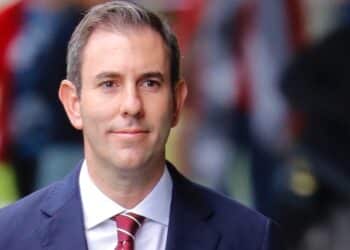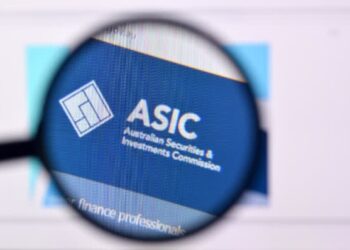In its submission to the Treasury review of the ASIC industry funding model (IFM), CPA Australia said current participants are paying for past regulatory and enforcement activities taken against companies that were unlicensed, unregulated, or may no longer be part of the sector.
“This is particularly acute in the financial advice sector,” CPA’s executive general manager of policy and advocacy, Dr Gary Pflugrath said.
Namely, under the current model, the large institutional Australian Financial Services (AFS) Licensees that have ceased to provide retail financial advice are still subject to historical enforcement activities, the costs of which are borne by the remaining AFS licensees who are predominantly small to medium-sized businesses.
“The cost of enforcement activity against unlicensed operators appears to be borne by those who are appropriately licenced, which is arguably inconsistent with Section 10(4) of the ASIC Supervisory Cost Recovery Levy Act 2017,” Dr Pflugrath said.
He also highlighted the “significant increase” in regulatory and enforcement costs across the financial advice sector amid a considerable reduction in the number of participants paying the ASIC levy.
“This means that fewer numbers of participants are each paying higher levies to cover the overall increasing total cost of enforcement, regulation and oversight,” Dr Pflugrath said.
Moreover, Dr Pflugrath shone a light on the apparent lack of transparency with respect to indirect costs which average up to 40 per cent each year and noted that industry participants may be covering “some general and administrative costs” that are unrelated to ASIC’s regulatory and oversight functions.
“This is particularly evident with the financial advice sector’s indirect costs increasing significantly at the same time that enforcement costs have also risen significantly”.
Raising previously aired budgeting issues, Dr Pflugrath said: “The significant delays between ASIC levy estimate being provided and the final levies being announced each year, coupled with the significant variations between the estimated levies and the final levies charged, makes it extremely difficult for participants to accurately budget for their ASIC levies and to set adequate fees for their clients to recoup these costs”.
To address the concerns raised by Dr Pflugrath, CPA Australia made a number of recommendations including the separation of enforcement costs from ASIC’s day-to-day or “business as usual” regulatory costs. Instead, it said, these costs should be attributed to and, where possible, recovered from entities to which the enforcement activity directly relates.
Moreover, the group wants to see the cost of regulating unlicensed or unregulated activities, or activities relating to entities that are no longer regulated entities, recovered from them and not from regulated sub-sectors.
Additionally, to ease budgeting issues, CPA sees merit in the transition to a forward-looking forecast annual levy, based on the expected budget, with any adjustments made in the following year based on actuals.




Normal citizens don’t have to specifically pay for our Police force to prosecute criminals. Doctors don’t have to pay for malpractice suits against charlatans and unlicensed ‘quacks’, lawyers don’t have to pay for bad lawyers to be prosecuted. As professionals we all pay PI and our industry pays the absolute MOST PI premiums of all. Then on top of that we get uniquely hit with ASIC’s costs of prosecuting NON Advisers, which includes a hefty bill to offset their admin costs. Just what does the tax we pay from our practices go towards paying that we don’t already pay for separately?
Well done Dr Pflugrath – I remain perplexed that the Govt of the day thought this was a good idea – an ex judiciary punishment if there ever was one. – I one is to remain in business – these will always be passed through to the customer – Maybe the Current review that is looking at making advice affordable – should bring this to the attention of the ASIC team.
Bigger entities fight back…smaller ones don’t….
Smaller ones can’t.
Crickets from the FPA.
Financial advisers paying for the Melissa Caddick fraud is another issue that the FPA hasn’t been vocal about.
It leaves me wondering what the FPA actually does for advisers.
The separation of enforcement costs from regulatory activities is something which should never have been needed.
The pooling of those two totally different types of costs should never have happened in the first place.
So, don’t just separate these costs going forward. Go back to when small, law-abiding advisers first started having their bank accounts plundered by ASIC and re-work the whole of the enforcement costs.
Pay (and back-pay) these from consolidated revenue which is where the fines have gone.
Refund the levy to small businesses for the years in which it was demonstrably far in excess of ordinary regulatory activities
Prove to me that Australia is still a place where the little guys can expect a fair go!
Whilst it is nice of the CPA to do this, it should not have happened in the first place and CPA shouldn’t be wasting their resources telling the government it is happening. Seriously, can’t the government see that advisers shouldn’t be paying for their service sectors – eg: ASIC at all? Next the average person will be paying not just their accountant to do their tax but the tax office to review the tax return. I think the whole cost to fund ASIC is a ruse. The government would rather industry funds rule the super system and not have advisers showing clients how to save for retirement – thus paying say 15% tax in super or 0% in pension on their earnings rather than their marginal rate. They are about now and not the Australian’s futures. They clearly want advisers out. AND ITS WORKING!